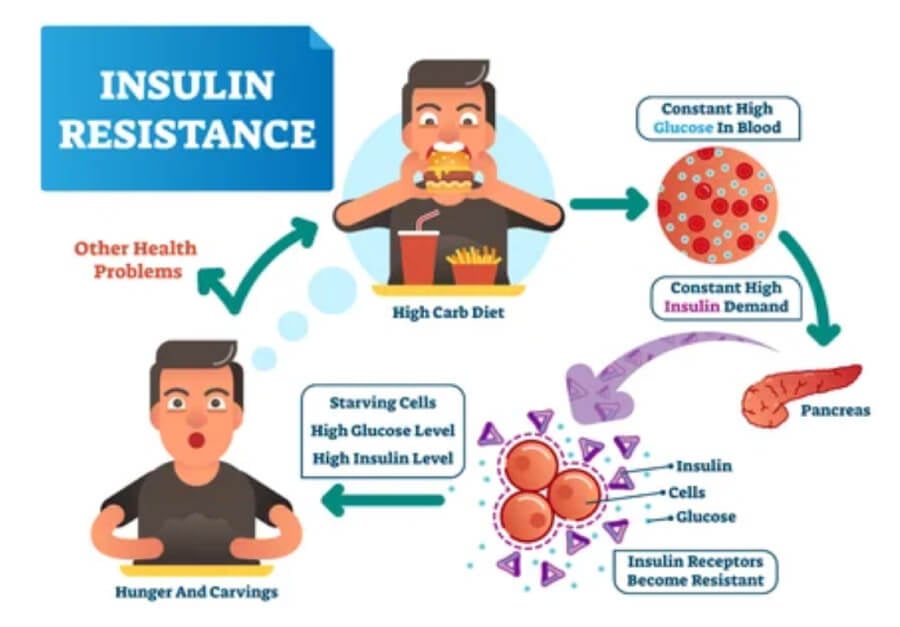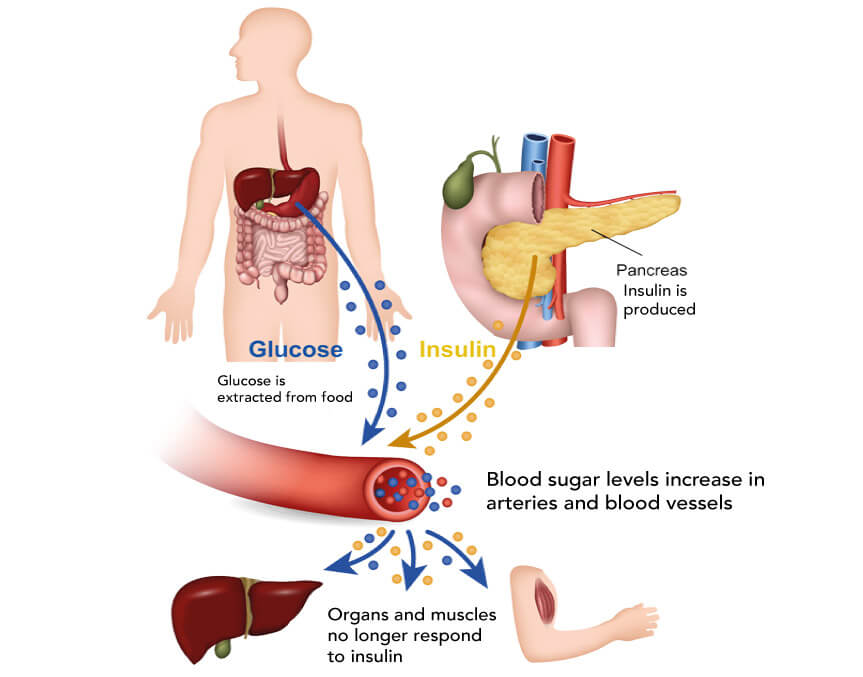What is Type 2 Diabetes?

What is diabetes overview:
When your digestive system breaks down food, your blood sugar level rises. The body’s cells absorb the sugar (glucose) in the bloodstream and use it for energy. The cells do this using a hormone called insulin. When your body doesn’t produce enough insulin and/or doesn’t efficiently use the insulin it produces, sugar levels rise in the bloodstream. As a result:
What is Type 2 diabetes? Type 2 diabetes is a condition that causes blood sugar to rise. Type 2 Diabetes is diagnosed based on a fasting blood glucose (sugar) level of 126 milligrams per deciliter (mg/dL) or higher.
When does type 2 diabetes occur?
Type 2 diabetes occurs when the body develops “insulin resistance” and can’t efficiently use the insulin it makes or/and when the pancreas gradually loses its capacity to produce insulin. The body can gradually develop ‘insulin resistance’ – this process is called pre-diabetes.
In pre-diabetes (a precursor to diabetes) your body makes insulin but can’t use it efficiently. To reduce high blood sugar levels, the insulin-producing cells in the pancreas release more and more insulin to keep blood sugar levels normal. Over time, the cells fail to keep up with the body’s need for insulin and blood sugar levels start rising.

What is type 2 diabetes?
When a fasting person has too much glucose in the blood (hyperglycemia) or too much insulin in the blood (hyperinsulinemia), they may have insulin resistance and are at risk of developing Type 2 diabetes.
Am I at risk of developing Type 2 diabetes?
People with pre-diabetic insulin resistance are more likely to have a history of being obese and physically inactive. They are also likely to have other cardiovascular risk factors such as too much cholesterol, and high blood pressure.
What are the health effects related to type 2 diabetes?
Nerve damage: High blood sugar levels can damage nerves, a condition called diabetic neuropathy. This can lead to numbness in the fingers, hands, toes and feet or tingling, burning or shooting pains that usually begins at the fingers or toes and spread upwards. Symptoms of this nerve damage can also include vomiting, diarrhea, constipation, problems with sexual function, dizziness, and other symptoms.
Blood vessel damage: Nerves and blood vessels in body can sustain damage from prolonged high blood sugar. In the eyes, damage to the blood vessels can eventually lead to blindness. Minor cuts and blisters in your feet can lead to ulcers, and infections. In your brain it can help contribute to Alzheimers.
Kidney damage: Kidneys filter blood, removing waste and extra fluid from your body. Over time, diabetes can damage your kidneys so they no longer work effectively, resulting in kidney failure. Kidney failure is not reversible and can only be treated by undergoing dialysis treatments numerous times per week.
Osteoporosis: This applies to people with Type 1 diabetes. This condition makes your bones brittle.
While the list of diabetes side-effects is lengthy, these problems unravel when diabetes is not treated. Diabetes can be managed and is often preventable. Adopting a healthy lifestyle, eating healthy diabetes meals and working with your physician can help postpone or avoid these conditions.
What happens when you have type 2 diabetes?
If you’ve been diagnosed with diabetes, it’s important to follow your health care professional’s recommendations and take all medications as directed.